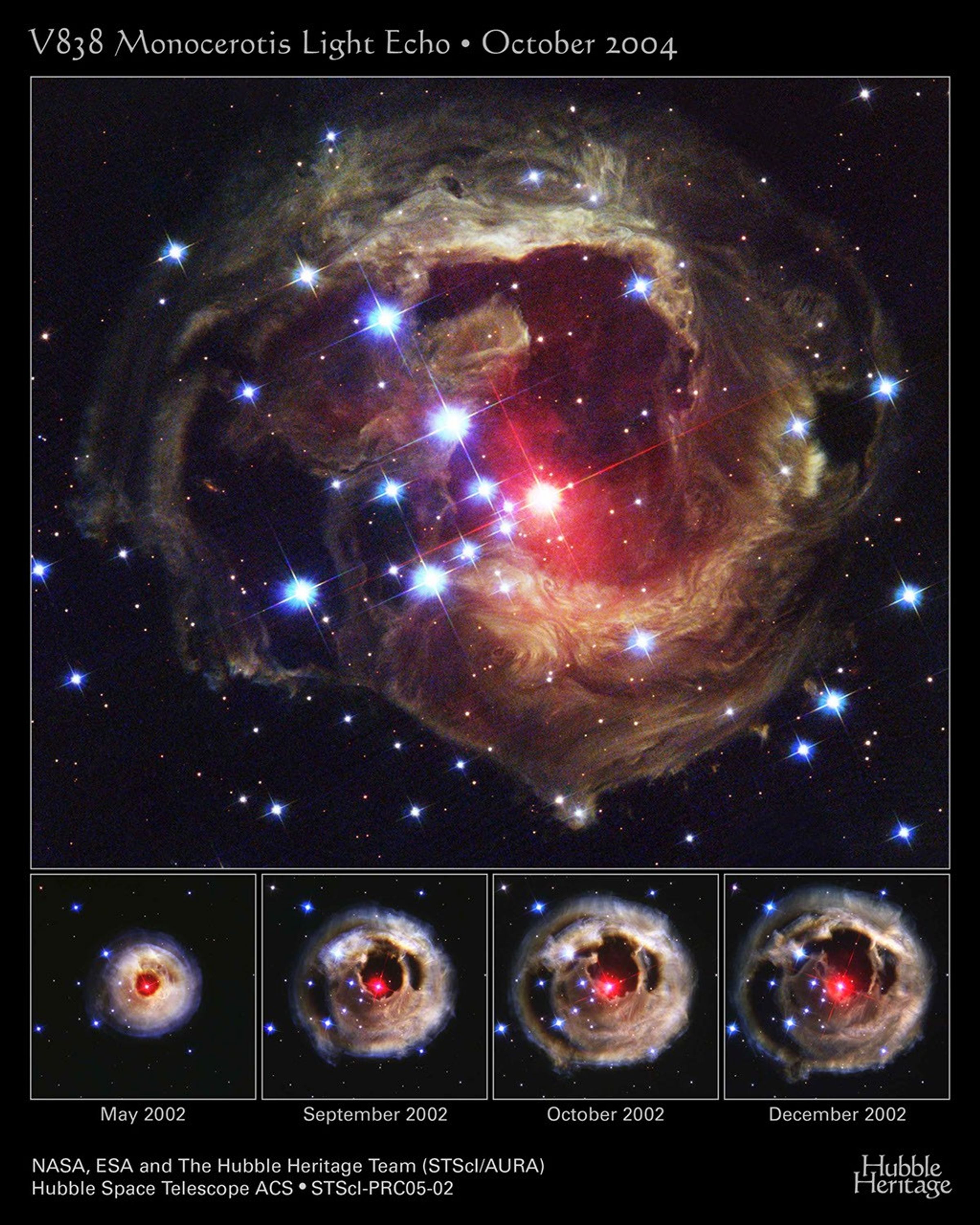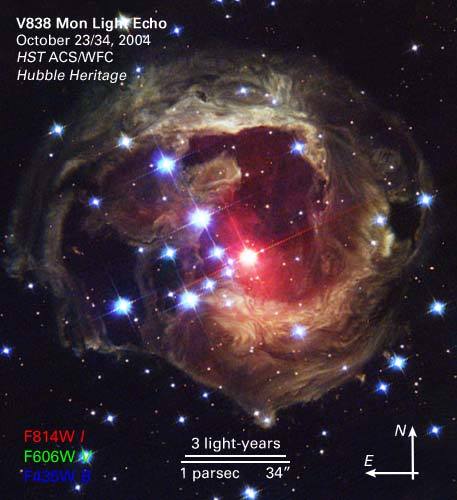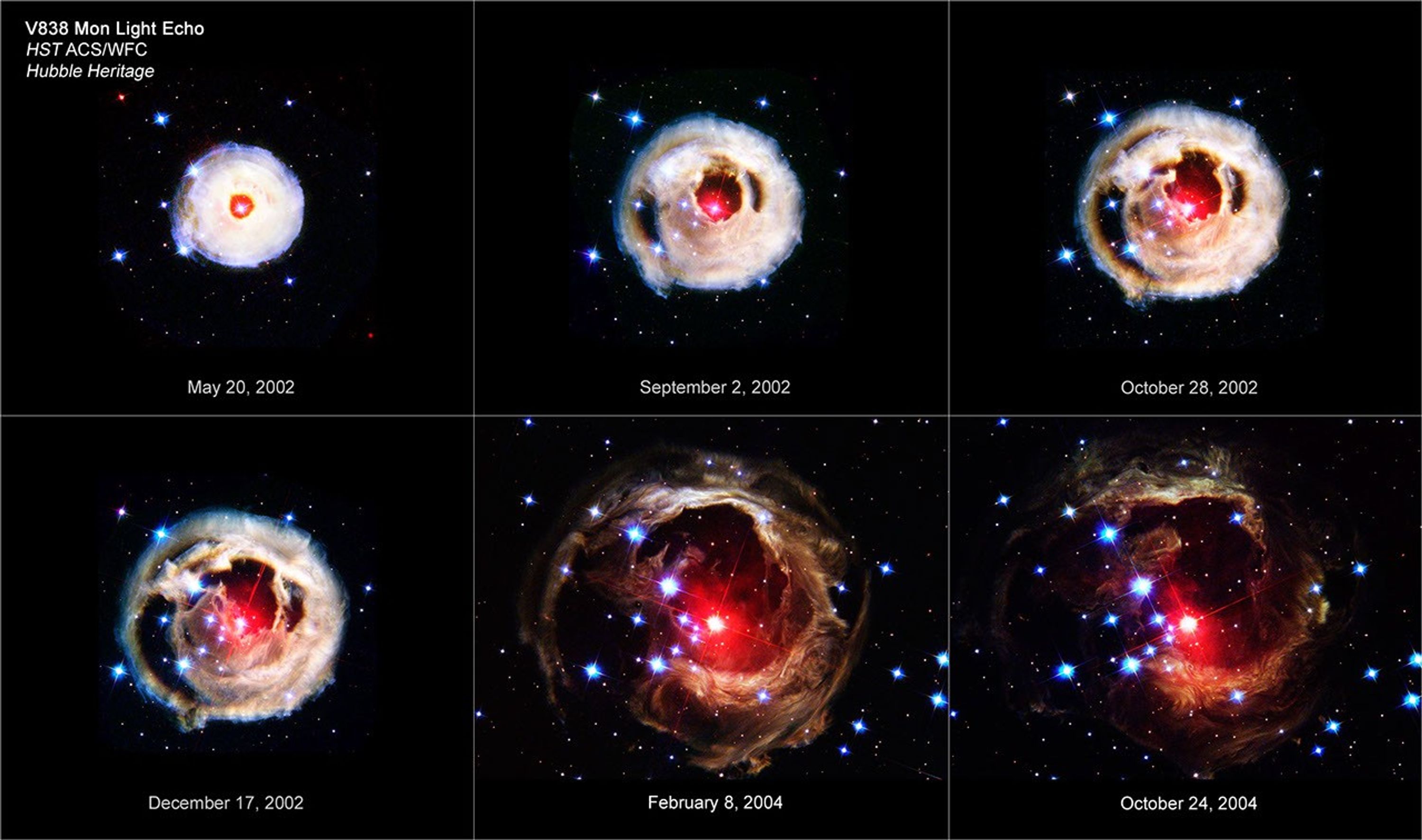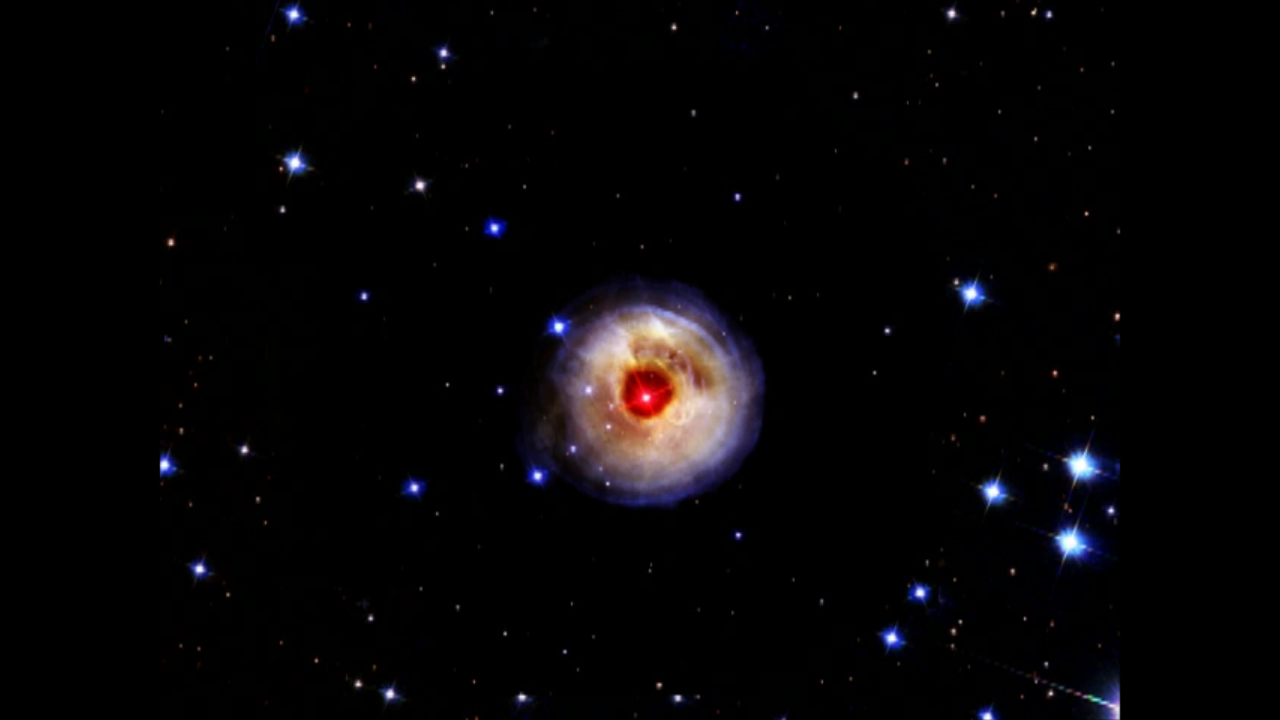1 min read
Flash From Star V838 Monocerotis Echoes Through Space

The Hubble Space Telescope's latest image of the star V838 Monocerotis (V838 Mon) reveals dramatic changes in the illumination of surrounding dusty cloud structures. The effect, called a light echo, has been unveiling never-before-seen dust patterns ever since the star suddenly brightened for several weeks in early 2002.
The illumination of interstellar dust comes from the red supergiant star at the middle of the image, which gave off a pulse of light three years ago, somewhat similar to setting off a flashbulb in a darkened room. The dust surrounding V838 Mon may have been ejected from the star during a previous explosion, similar to the 2002 event.
The echoing of light through space is similar to the echoing of sound through air. As light from the stellar explosion continues to propagate outwards, different parts of the surrounding dust are illuminated, just as a sound echo bounces off of objects near the source, and later, objects further from the source. Eventually, when light from the back side of the nebula begins to arrive, the light echo will give the illusion of contracting, and finally it will disappear.
V838 Mon is located about 20,000 light-years away from Earth in the direction of the constellation Monoceros, placing the star at the outer edge of our Milky Way galaxy. The Hubble telescope has imaged V838 Mon and its light echo several times since the star's outburst. Each time Hubble observes the event, different thin sections of the dust are seen as the pulse of illumination continues to expand away from the star at the speed of light, producing a constantly changing appearance. During the outburst event whose light reached Earth in 2002, the normally faint star suddenly brightened, becoming 600,000 times more luminous than our Sun.
The new image of V838 Mon, taken in October 2004 with Hubble's Advanced Camera for Surveys, was prepared from images obtained through filters that isolate blue, green, and infrared light. These images have been combined to produce a full-color picture that approximates the true colors of the light echo and the very red star near the center.
About the Object
- R.A. PositionR.A. PositionRight ascension – analogous to longitude – is one component of an object's position.07h 4m 4.99s
- Dec. PositionDec. PositionDeclination – analogous to latitude – is one component of an object's position.-3° 50' 50.0"
- ConstellationConstellationOne of 88 recognized regions of the celestial sphere in which the object appears.Monoceros
- DistanceDistanceThe physical distance from Earth to the astronomical object. Distances within our solar system are usually measured in Astronomical Units (AU). Distances between stars are usually measured in light-years. Interstellar distances can also be measured in parsecs.The star is ~20,000 light-years (~6 kiloparsecs) away.
- DimensionsDimensionsThe physical size of the object or the apparent angle it subtends on the sky.The top image is 2.4 arcminutes (13.7 light-years or 4.2 parsecs) wide.
About the Data
- Data DescriptionData DescriptionProposal: A description of the observations, their scientific justification, and the links to the data available in the science archive.
Science Team: The astronomers who planned the observations and analyzed the data. "PI" refers to the Principal Investigator.These data are from the HST program 10392: K. Noll, H. Bond, C. Christian, L. Frattare, F. Hamilton, Z. Levay, M. Mutchler, and T. Royle (STScI). - InstrumentInstrumentThe science instrument used to produce the data.HST>ACS/WFC
- Exposure DatesExposure DatesThe date(s) that the telescope made its observations and the total exposure time.May - December, 2002
- FiltersFiltersThe camera filters that were used in the science observations.F435W (B), F606W (V), F814W (I)
- Object NameObject NameA name or catalog number that astronomers use to identify an astronomical object.V838 Monocerotis
- Object DescriptionObject DescriptionThe type of astronomical object.Nova-like variable star and surrounding light echo
- Release DateFebruary 3, 2005
- Science ReleaseLight Continues to Echo Three Years After Stellar Outburst
- Credit

Blue: F435W (B) Green: F606W (V) Red: F814W (I)

Related Images & Videos

The Expanding Light Echo of Red Supergiant Star V838 Monocerotis
This image shows a time sequence of Hubble Space Telescope images of the light echo around V838 Mon, taken between May 2002 and October 2004. All six pictures were taken with Hubble's Advanced Camera for Surveys using filters sensitive to blue, visible, and infrared wavelengths....

V838 Mon Light Echo Unveiling
A dissolve sequence of six images taken by Hubble's Advanced Camera for Surveys shows a CAT-scan-like probe of the three-dimensional structure of the shells of dust surrounding the aging star V838 Monocerotis. The sequence reveals dramatic changes in the way a brilliant flash of...
Share
Details
Claire Andreoli
NASA’s Goddard Space Flight Center
Greenbelt, Maryland
claire.andreoli@nasa.gov
































